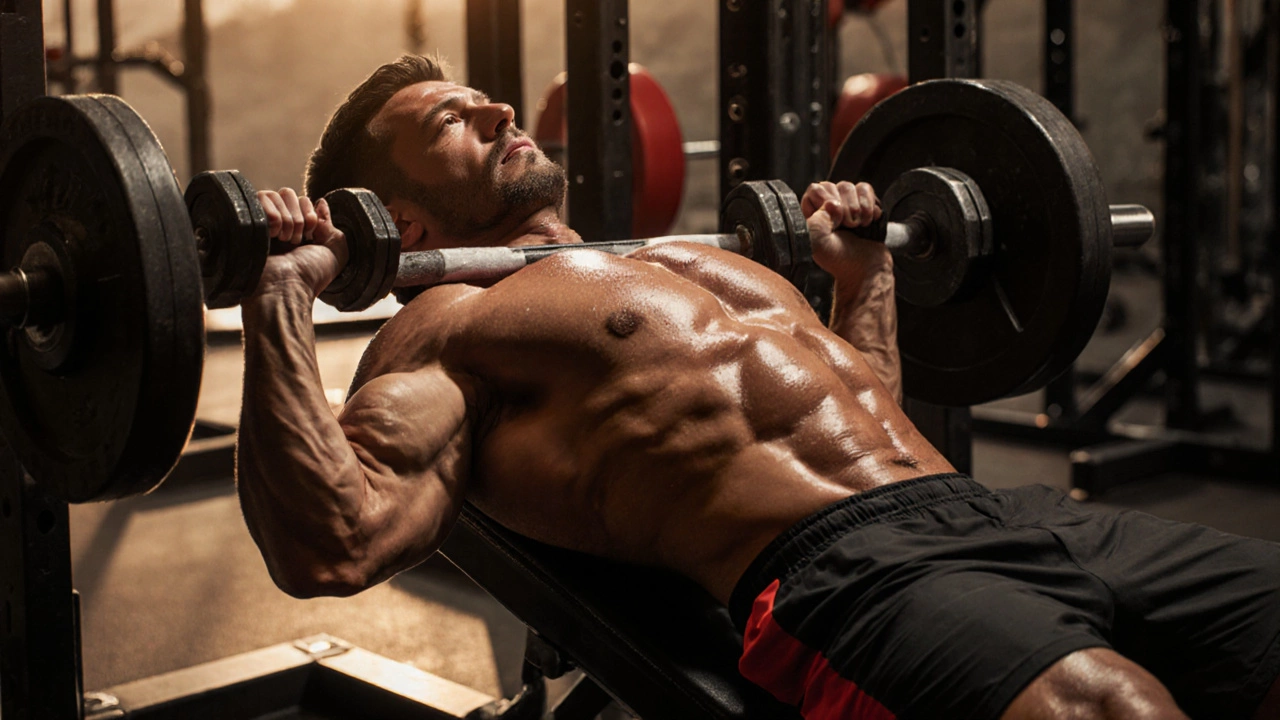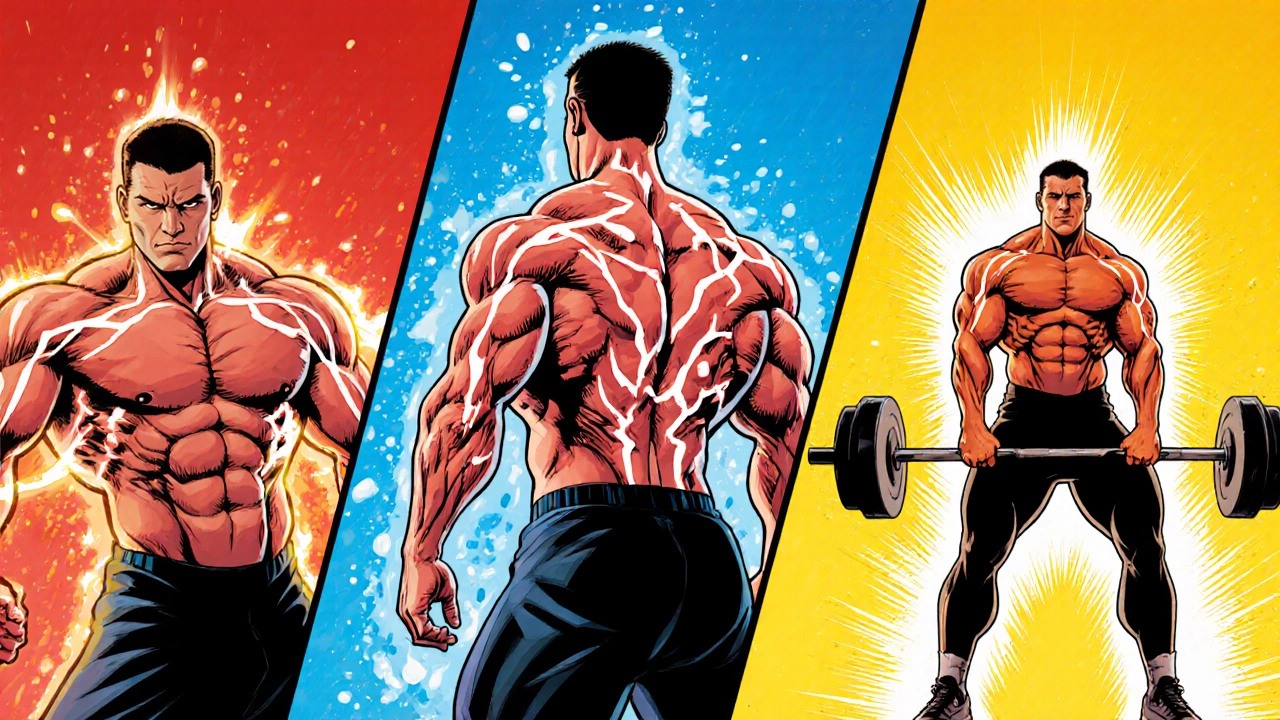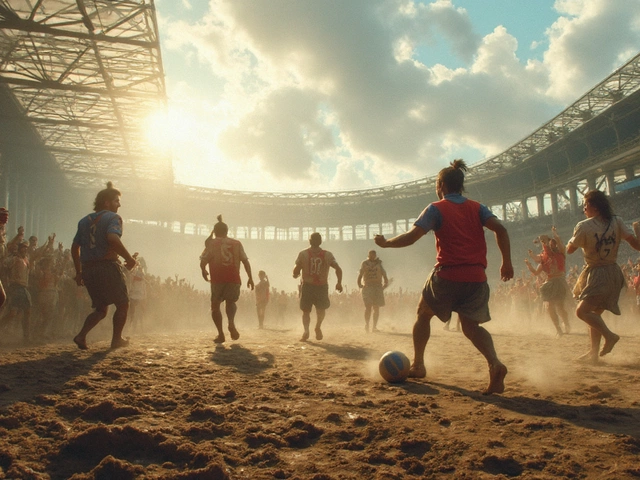What Is the Best Gym Split for Muscle Growth and Strength?

Gym Split Recommendation Tool
Find Your Perfect Gym Split
Answer a few quick questions to get your personalized workout split recommendation
Your Recommended Split
Weekly Schedule:
If you’ve ever stared at a blank workout calendar wondering how to structure your week, you’re not alone. The best gym split isn’t one-size-fits-all. It depends on your goals, recovery ability, schedule, and experience level. But there are proven patterns that work for most people trying to build muscle, get stronger, or just stay consistent. Forget the flashy Instagram routines. Let’s cut through the noise and break down what actually delivers results.
What a Gym Split Actually Means
A gym split is just how you divide your workouts across the week. Instead of doing full-body every day (which can leave you drained), you group muscle groups together. This lets you train harder on each session and still recover. The most common splits are full-body, upper/lower, push/pull/legs, and bro splits. Each has pros and cons.
Think of it like planning a road trip. You could drive 10 hours straight and burn out. Or you could break it into two 5-hour legs with rest stops. That’s what a split does for your muscles - gives them time to recover while keeping you training frequently.
Best Gym Split for Beginners
If you’re new to lifting, your main goal isn’t to maximize muscle growth yet - it’s to learn movement patterns and build consistency. A full-body routine three times a week is the most effective starting point.
Here’s a simple template:
- Monday: Squat, Bench Press, Row, Plank
- Wednesday: Deadlift, Overhead Press, Pull-Up, Lunges
- Friday: Squat, Incline Bench, Lat Pulldown, Glute Bridge
You hit every major muscle group twice a week. That’s enough stimulus to build strength and muscle without overtraining. Most beginners see solid progress for 6-12 months with this approach. No need to overcomplicate it.
Key rule: Focus on form. Lift with control. Don’t chase heavy weights if your back rounds on a deadlift or your knees cave on a squat. Progress slowly - 5 pounds more on the bar every two weeks is more than enough.
Best Gym Split for Intermediate Lifters
Once you’ve built a base and can squat 1.5x your bodyweight, bench 1x, and deadlift 2x, it’s time to shift to a more targeted split. The upper/lower split is the most balanced and widely used by serious lifters.
Here’s how it works:
- Monday: Upper Body (Push Focus) - Bench, Overhead Press, Dips, Lateral Raises
- Tuesday: Lower Body - Squat, Romanian Deadlift, Leg Press, Calf Raises
- Thursday: Upper Body (Pull Focus) - Pull-Ups, Rows, Face Pulls, Bicep Curls
- Friday: Lower Body - Deadlift, Front Squat, Lunges, Hamstring Curls
You train each muscle group twice a week, which research shows is optimal for hypertrophy. A 2016 study in the Journal of Strength and Conditioning Research found that training muscles twice weekly led to 3.1% more muscle growth over 8 weeks compared to once weekly.
Upper/lower lets you go heavier on compound lifts because you’re not fatigued from a full-body session. It also fits well into a 4-day week, which works for most people with jobs or families.

Best Gym Split for Advanced Lifters
If you’ve been lifting for 3+ years and your progress has slowed, you might need more volume and specialization. That’s where the push/pull/legs (PPL) split shines.
Here’s the structure:
- Monday: Push - Chest, Shoulders, Triceps
- Tuesday: Pull - Back, Biceps, Rear Delts
- Wednesday: Legs - Quads, Hamstrings, Glutes, Calves
- Thursday: Rest
- Friday: Push
- Saturday: Pull
- Sunday: Legs
You hit each muscle group twice a week with higher volume. For example, on Push days, you might do 12 sets of chest work across two sessions. That’s a lot more than you’d get in an upper/lower split.
Advanced lifters often use PPL because it allows for better isolation work. Want bigger arms? Add extra bicep and tricep volume on pull and push days. Want thicker lats? Add weighted pull-ups and cable rows on every pull day.
But PPL isn’t for everyone. It demands more recovery. If you’re sleeping less than 7 hours or stressed at work, you’ll burn out. Use this only if you’re consistent with sleep, nutrition, and have at least 5-6 days a week to train.
What About Bro Splits?
You’ve probably heard of the classic “chest day, back day, leg day” routine. One muscle group per day. It looks impressive in magazines, but it’s outdated for most people.
Here’s why: Training a muscle group only once a week means you’re not giving it enough stimulus to grow optimally. Studies show muscle protein synthesis peaks around 24-48 hours after training and drops off after that. Waiting 6-7 days between sessions for the same muscle is like feeding your plants once a month.
Bro splits can work for bodybuilders prepping for a show, where volume is cranked up and recovery is managed with supplements and drugs. But for natural lifters? It’s inefficient.
There’s one exception: If you’re recovering from injury or have a schedule that only allows one gym visit per muscle group, then a bro split with higher volume per session can still work. But it’s not the best gym split for long-term growth.
How to Choose Your Split
Here’s a quick decision guide:
- New to lifting? → Full-body 3x/week
- Been lifting 6-18 months? → Upper/lower 4x/week
- Advanced, 3+ years, want maximum muscle? → Push/pull/legs 6x/week
- Can only train 2-3 days a week? → Full-body or upper/lower with compound lifts
- Recovering from injury? → Lower volume, focus on mobility and controlled movements
Also consider your goals:
- Strength? → Prioritize heavy compounds (squats, deadlifts, presses)
- Muscle size? → Add isolation work (curls, lateral raises, leg extensions)
- Endurance? → Higher reps (12-20), shorter rest periods

Common Mistakes with Gym Splits
People mess up splits in predictable ways:
- Training too much too soon. Jumping into PPL without a base leads to burnout. Start simple.
- Ignoring recovery. No amount of perfect splits helps if you’re sleeping 5 hours and eating junk.
- Chasing variety. Switching splits every 2 weeks stops progress. Stick with one for at least 8-12 weeks.
- Overlooking legs. Many men skip leg day. That’s not a split - that’s a gap.
- Forgetting the mind-muscle connection. Lifting heavy without feeling the target muscle is wasted effort.
Progress isn’t about doing more. It’s about doing the right thing consistently.
Sample 8-Week Plan Using Upper/Lower Split
Here’s a real-world example for someone training 4 days a week:
Weeks 1-4:
- Upper (Push): Bench 3x8, Overhead Press 3x8, Dumbbell Rows 3x10, Lateral Raises 3x15
- Lower: Squat 3x8, Romanian Deadlift 3x10, Leg Press 3x12, Calf Raises 4x20
- Upper (Pull): Pull-Ups 3xMax, Barbell Rows 3x8, Face Pulls 3x15, Bicep Curls 3x12
- Lower: Deadlift 3x5, Front Squat 3x8, Walking Lunges 3x12, Hamstring Curls 3x15
Weeks 5-8: Add 5-10 lbs to all main lifts. Add one set to each exercise. Rest 90 seconds between sets.
By week 8, you’ll likely have added 15-25 lbs to your squat and bench. That’s real progress.
Final Thoughts
The best gym split is the one you can stick to. Not the most complex. Not the one your favorite influencer uses. The one that fits your life, your energy, and your goals.
Most people fail because they overthink the structure. They don’t fail because their split was wrong. They fail because they quit.
Start simple. Track your lifts. Eat enough protein. Sleep. Stay consistent. The right split will reveal itself as you progress.
What is the best gym split for muscle growth?
For most people, the upper/lower split trained 4 days a week is the most effective. It hits each muscle group twice weekly, which research shows maximizes muscle protein synthesis. Push/pull/legs works well for advanced lifters who need higher volume. Full-body is best for beginners.
How many days a week should I train?
3-4 days is ideal for most. Beginners can start with 3 full-body days. Intermediate lifters thrive on 4 days (upper/lower). Advanced lifters may train 5-6 days with push/pull/legs. More isn’t better - recovery matters more than frequency.
Is a 5-day split better than a 3-day split?
Not necessarily. A 5-day split only works if you’re advanced, well-rested, and eating enough. Most people can’t recover from 5 intense days. A 3-day full-body split with heavy compounds and progressive overload often leads to better long-term gains than a poorly recovered 5-day routine.
Should I train legs every week?
Yes. Legs are the largest muscle group and drive overall strength and hormone response. Skipping leg day limits your growth potential and creates imbalances. Even if you’re focused on upper body, train legs at least twice a week.
Can I do cardio with my gym split?
Absolutely. Do cardio on rest days or after lifting sessions. Keep it moderate - 2-3 sessions of 20-30 minutes of walking, cycling, or rowing. Avoid long cardio sessions before leg day. They’ll drain your energy for lifting.




